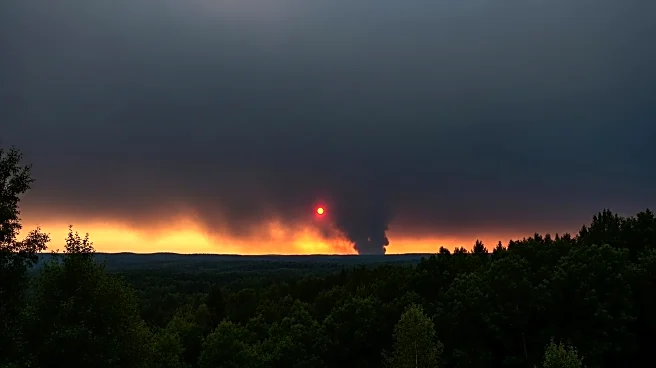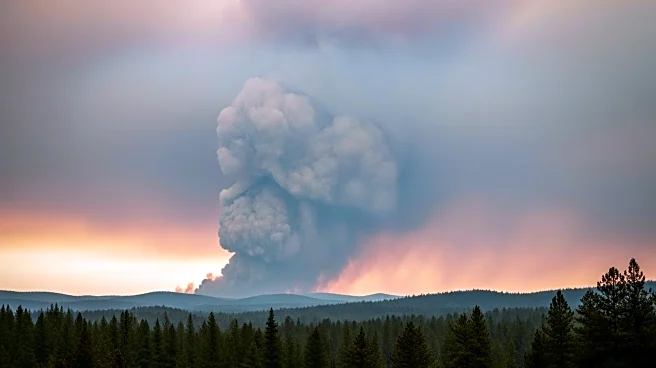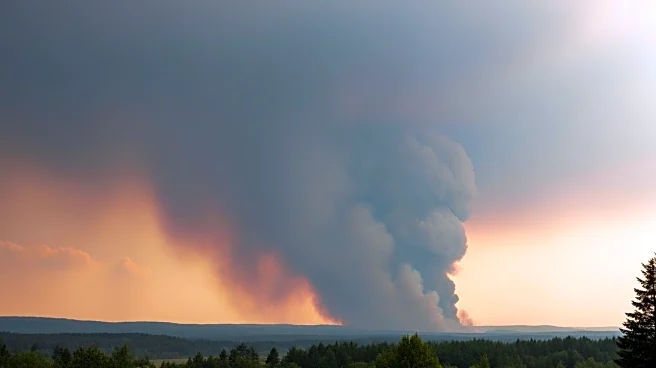What's Happening?
A recent study published in Nature has revealed that smoke from Canadian wildfires in 2023 was responsible for 82,000 deaths worldwide, including the tragic death of nine-year-old Carter Vigh in British Columbia. Carter, who had asthma, succumbed to an asthma attack exacerbated by wildfire smoke. The study highlights the severe health impacts of tiny toxic particles emitted by wildfires, which affected not only Canada and the U.S. but also Europe, causing 22,000 early deaths there. Despite the vast death toll, public awareness and government action remain insufficient, as air quality monitoring often fails to detect localized pollution. Carter's mother, Amber Vigh, has initiated a project to distribute air quality monitors in his memory, aiming to prevent similar tragedies.
Why It's Important?
The findings underscore the critical health risks posed by wildfire smoke, which ranks among the greatest threats to human health. The study adds to growing evidence that wildfire-related air pollution is more toxic than other sources, potentially leading to higher mortality rates. This has significant implications for public health policy and emergency response strategies, particularly in regions prone to wildfires. The initiative by Carter's mother to improve air quality monitoring could serve as a model for other communities, highlighting the need for better infrastructure to protect vulnerable populations from air pollution.
What's Next?
The study's results may prompt increased advocacy for stricter air quality regulations and improved monitoring systems. As wildfires become more frequent and intense due to climate change, governments may face pressure to enhance public health protections and invest in technologies to mitigate air pollution. The upcoming UN climate meeting in Brazil could address these issues, potentially leading to new international commitments to reduce emissions and protect public health.
Beyond the Headlines
The tragedy of Carter Vigh's death highlights the ethical responsibility of governments to protect citizens from environmental hazards. It raises questions about the adequacy of current air quality standards and the need for more localized monitoring systems. The initiative to distribute air quality monitors reflects a grassroots approach to addressing environmental justice, empowering communities to take proactive measures in safeguarding their health.












